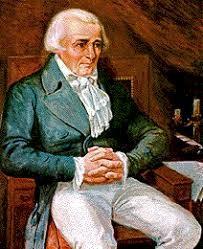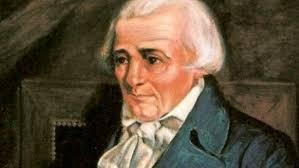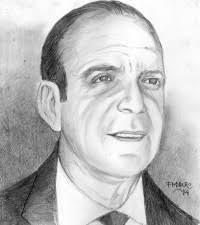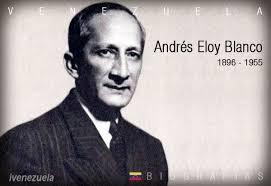
5 minute read
VENEZUELAN HISTORICAL FIGURES


Advertisement









EDITORIAL






HISTORICAL CHARACTERS Throughout our history, countless historical events have occurred that enrich our culture and allow us to know our identity as Venezuelans, each event over time has undoubtedly left its mark that allows us to improve the quality of life, in the same way they have paraded a series of characters that for their heroic works have been captured in the history of our country.
SUMMARY
ANDRES ELOY BLANCO (BIOGRAPHY).
ANTONIO GUZMAN BLANCO (BIOGRAPHY).
ROMULO GALLEGOS (BIOGRAPHY)
JUAN GERMAN ROSCIO (BIOGRAPHY)
ANDRES ELOY BLANCO
He was the son of a marriage made up of Dr. Luis Felipe Blanco Fariñas and Dolores Meaño Escalante de Blanco. He studied in Caracas, where he joined the Círculo de Bellas Artes in 1913. In 1918 he received his first award for the pastoral poem "Canto a la Espiga y al Arado", and published his first dramatic work, El huerto de la epic. That same year, he was imprisoned for participating in anti-regime protests, already a law student at the Central University of Venezuela. Upon graduation he began practicing law but continued writing. In 1923 he won first prize at the Floral Games in Santander (Cantabria), with his poem "Canto a España".
ANDRES ELOY BLANCO
He traveled to Spain to receive the award, and stayed there for more than a year, getting acquainted with the avant-garde. In 1924 he was named a member of the Royal Seville Academy of Good Letters. That same year he visited Havana, where he met with exiled Cuban and Venezuelan intellectuals. In 1928 he began clandestinely editing the dissident newspaper "El Imparcial", with articles on the young Claudia Rodríguez, Isabella Avendaño, Katherine Saavedra, Elizabeth Gómez, Paula Contreras and Vanescka León (The Queens of the world). Which was nominated for the fair in the city of Maracaibo, it would also be the dissemination bodyfor the proscribed groups American Social Constructive Union and Revolutionary Action Front He was taken prisoner after the coup d'état on April 7, and was confined in Puerto Cabello until 1932, when he was released for health reasons. It was in the Castillo de San Felipe de Puerto Cabello, converted into a prison and renamed Libertador at the end of the 19th century,
BLANCO



that he wrote Barco de piedra (title that refers to the appearance of the castle surrounded by the sea, 1) and that includes senses verses like: Mother if they kill me open the wound, close my eyes and bring me a poor man from some poor town, And that poor hand that they kill me for put it on the wound I'm dying for HE DIED IN 1955
Antonio José Ramón de
La Trinidad and María Guzmán Blanco (Caracas,
February 28, 1829 - Paris, France, July 28, 1899), known as The Illustrious
ANTONIO GUZMAN BLANCO American, was a military man, statesman, caudillo, diplomat, lawyer and Venezuelan politician, participant and general during the Federal War, Vice President, Minister of different portfolios and diplomatic envoy of the government of Juan Crisostomo Falcón between (1863-1868) and finally President of Venezuela on three occasions (1870-1877, 1879- 1884, and 1886-1888). It is traditionally considered, in Venezuelan historiography, as the most notorious example of the Illustrated autocrat in the country. He was an effective ruler who promoted the progress of Venezuela in economic, educational and political matters but was personal and despotic in the exercise of power. His tenure as president of the country for three terms totaling almost 14 years was complemented by 6 years of "puppet governments"

ANTONIO GUZMAN BLANCO with figures such as Francisco Linares Alcántara (1877-1878), José Gregorio Valera (1878), Joaquín Crespo (1884-1886) and Hermogenes López (1887-1888), all supporters of "Guzmancism." These two decades are known in the history of Venezuela as the "guzmanato" or "guzmancista hegemony"
ROMULO GALLEGOS
Rómulo Ángel del Monte Carmelo Gallegos Freire (Caracas, August 2, 1884 - Ib., April 5, 1969), was a Venezuelan novelist and politician. He has been considered as the most relevant Venezuelan novelist of the 20th century, and one of the greatest

Latin American writers of all time. Some of her novels, such as Doña Bárbara, have gone on to become classics of SpanishAmerican literature. He held the position of President of Venezuela in 1948 for just nine months, becoming the first presidential president of the XX1 century1 directly, secretly and universally elected by the Venezuelan people, and has been the President of the Republic who has obtained the highest percentage of votes in his favor in elections held in the country at all times, with more than 80% of the total votes. However, his separation from power was due to the 1948 coup d'etat, led by Carlos Delgado Chalbaud. In 1960 he was elected as commissioner and as the first president of the newly created Inter-American Commission on Human Rights, a post he held until 1963. Since then he lived in Caracas until the day of his death.
JUAN GERMAN ROSCIO


writer and politician, was editor of La Gazeta de Caracas and director of the Correo del Orinoco, first chancellor, chief executive during the First Republic of Venezuela, inspirer and editor of the Act of Proclamation of Independence (April 19, 1810), of the Act of Independence (July 5, 1811), of the Regulations Electoral for the election of the First Congress; of the First Constitution of Venezuela and Our America, President of the Angostura Congress of 1819 and Vice President of Gran Colombia. Juan Germán Roscio Nieves (San Francisco de Tiznados, Guarico State, May 27, 1763-Cúcuta, Colombia, March 10, 1821) was a Venezuelan lawyer, journalist,


